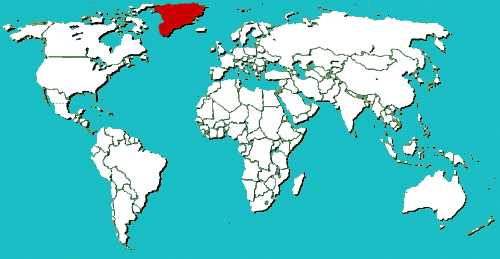
Circle the area on this map

B. Scientists estimate that if all of Greenland's ice sheet were to melt, the global sea level would rise by 23 feet (7 meters). "To be perfectly clear, that is not what we're seeing," said researcher Thomas Mote. "Greenland is losing mass, but it would take a very long time to lose all of that mass."
A. Greenland is considered part of the North American continent, and its closest neighbor is Canada -- North America's largest country. Greenland's 57,695 people have self-rule over most domestic affairs, but the country is part of the Kingdom of Denmark which oversees foreign policy, security and financial affairs.
C. The ice sheet covers 81 percent of the territory and is up to two miles thick in spots. All the towns and settlements are situated along the ice-free coast, with the population being concentrated along the west coast.
A. Greenland is considered the world's largest island, but scientists believe the ice actually covers a cluster of smaller islands.